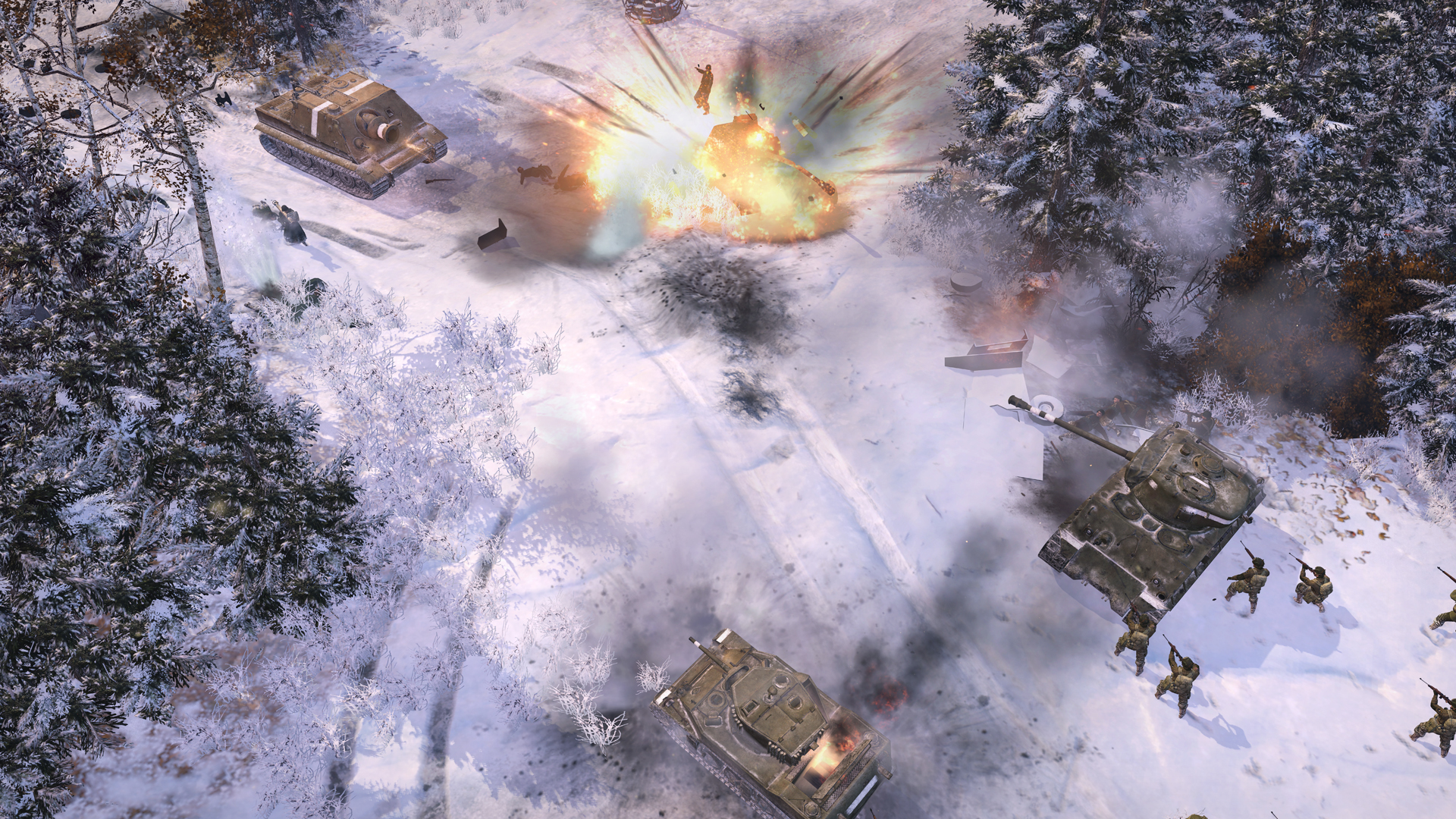
It really helps inform our decisions as a design team. Using that data, they’re able to look at player patterns and behaviors and unit balance and usage and just tons of other parameters. They’re able to look at our game as a whole using something like 23 million hours of Company of Heroes 2 gameplay data. QD: We put in simple surveys to gauge snap reactions about the game, such as 'how are you feeling?' or 'was that fun?' They’re the sorts of questions that just give a very broad overview of player opinion, and then one thing we added over the last year that I think is really interesting is a whole new analytics unit. We prefer authenticity, which has a broader definition, and focus on the tone and the intensity of combat rather than counting the number of bolts on a tank or determining if a badge is absolutely correct. It’s a strategy that goes back to Homeworld: entice the player through visuals and an emotional connection first, and then deliver the gameplay and keep them hooked.įocusing on historical accuracy is a dangerous road to go down. The depth of gameplay comes through after that. We look to the presentation layer of the game-the audio, speech, animation, and the battlefield itself-to hook player in an emotional way, and maybe even get them to relate to their units and hopefully feel a little bit of compassion for what they’re playing with. QD: It’s been a long-standing tradition in Company of Heroes to deliver that kind of feeling and a more emotional experience. We need to be able to build content that spans a couple of years of use or is easier for users to play with, so we do air on the side of gameplay more often than not. We prefer authenticity, which has a broader definition, and focus on the tone and the intensity of combat rather than counting the number of bolts on a tank or determining whether a badge is absolutely correct. Focusing on historical accuracy is a dangerous road to go down. We do have some rules and restrictions, as well as a few strategies for addressing this. QD: It’s a continual challenge because in some respects World War II is my IP licencor. GS: How does the team manage to strike a balance between historical accuracy and making a fun video game?

You need a critical mass of stuff that looks good enough to get the right level of feedback, stuff that’s good enough so that the player can focus on the gameplay as opposed to asking 'why doesn't this unit animate?' You don’t have guns that turn or are just missing whole parts of the vehicle itself, so the player is missing vital feedback and we find very little relevance in showing the game that early to the community because the feedback we get is biased by the experience. įor example, our vehicles start as crudely textured boxes. It varies a bit from game to game, but I think you need a critical mass of feedback, especially player-driven feedback, before you soliciting. QD: A lot of people claim they can just look at a game and judge it on its gameplay merits, but I have never seen that actually be successful or true. GS: How early do you open up your projects to community feedback? Those are technical solutions, the sorts of things we developed to meet the goals of the army-and while those solutions may change, the goals stay consistent. That was an idea that arose out of delivering an army that was versatile, as was having vehicle crews that could disembark and tank abilities that could be used while moving. The US Forces, for example, have weapon racks in their base that you can retreat back to and equip a new weapon from before heading back into the fight. QD: We try not to change our overall goals for the armies too much, however the way in which we meet those goals can vary. GS: How do you start designing one of these armies, and did your design goals change at all during development? That was our starting point for these armies in terms of making them feel unique compared to the other armies in the game. The OKW, on the other hand, are extremely hard-hitting with a lot of veteran infantry units, super heavy tanks, and technological advances-but they're also a hard army to sustain because their economy was under a lot of pressure at this point in the war.

They don’t have anything too hard-hitting, but they do have a lot of gameplay elements built around their versatility and mobility. The American army is very flexible, versatile, and focuses on mobility. Quinn Duffy: We have two new armies that have designed from the ground up, the US Forces and German OberKommando West, so a new American army and a new German army. GameSpot: So tell me about the two new factions coming in The Western Front Armies. By clicking 'enter', you agree to GameSpot's


 0 kommentar(er)
0 kommentar(er)
